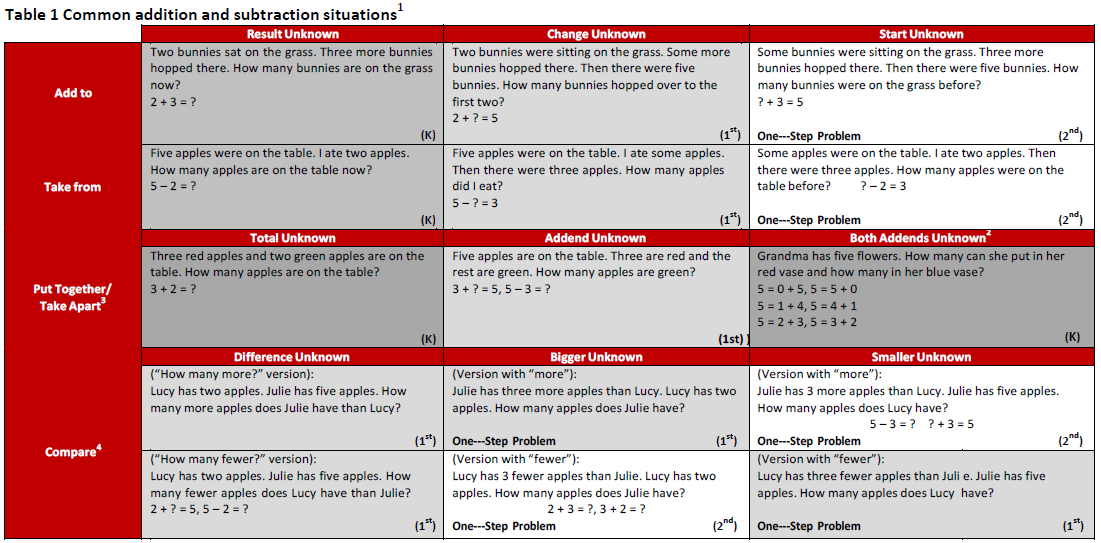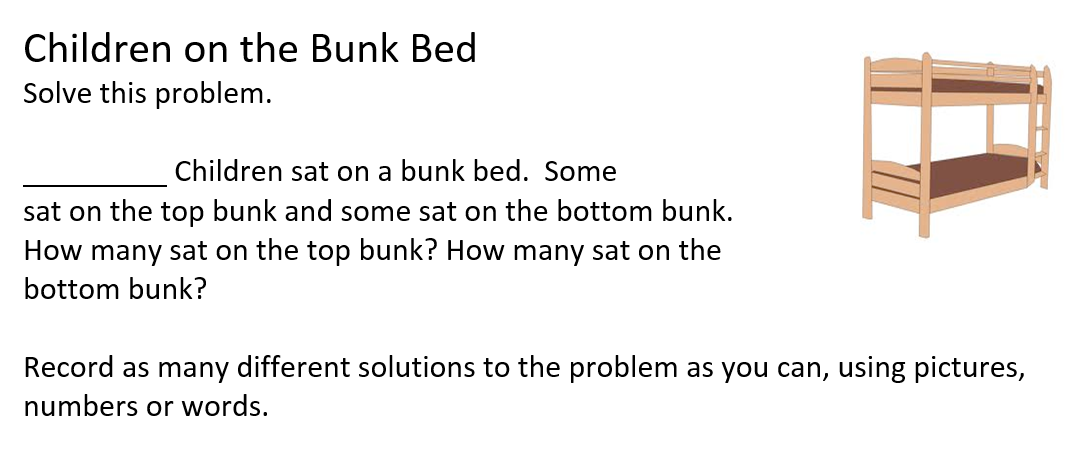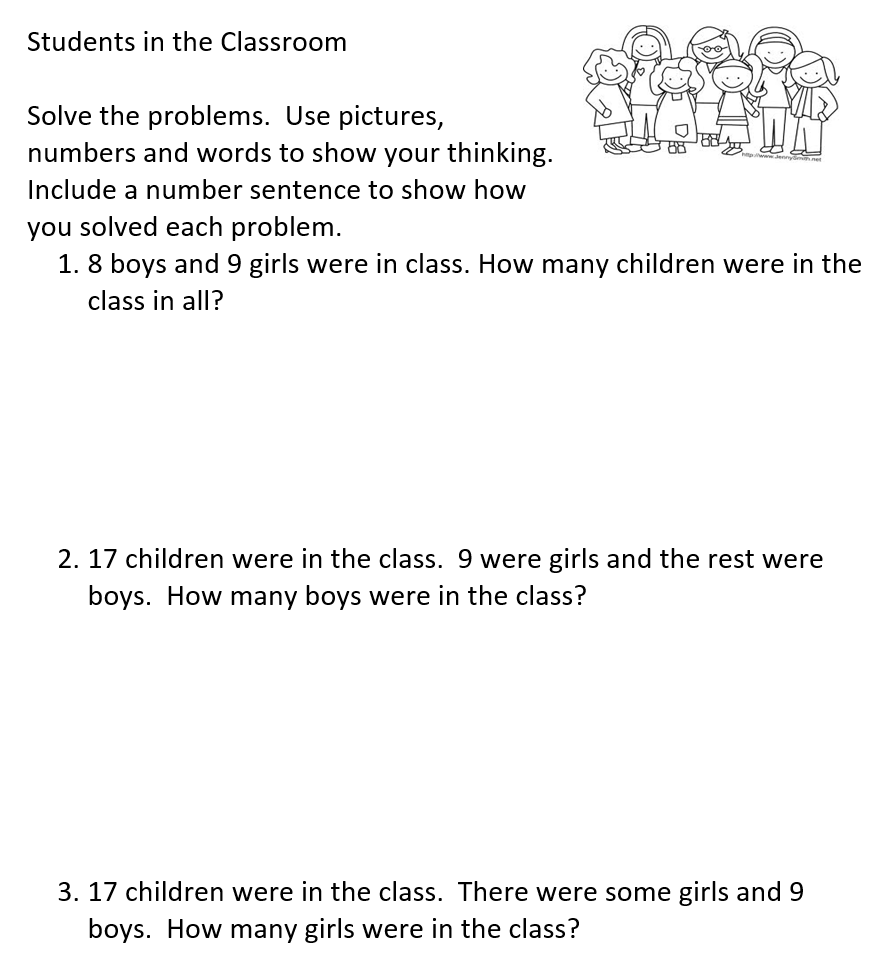Use addition and subtraction within 20 to solve word problems involving situations of adding to, taking from, putting together, taking apart, and comparing, with unknowns in all positions, e.g., by using objects, drawings, and equations with a symbol for the unknown number to represent the problem
(Students are not required to independently read the word problems.)
Cognitive Complexity Level: 1-Recall
Grade-level problem situations should be explored throughout the year: Add Sub Problem Structures
[divider] [/divider] Students are able to…
- describe what is happening in a story problem
- represent problems using manipulatives and identify the unknown
- use and explain varied strategies to solve problems
[divider] [/divider] Students are able to…because teachers:
- facilitate student discussions relating to summarizing the story problem and explaining their strategy
- use story problems that represent different problem structures and have the unknown in all positions
[divider] [/divider] Questions to ask students:
- Ask: How do the parts in the equation connect to the model?
- Sample answer that indicates understanding: Student is able to explain how their equation connects to each part of the model and how they determined where to put the unknown in the equation.
- Ask: How did you decide which operation to use when creating your equation?
- Sample answer that indicates understanding: Student is able to connect the action or sentence within the story problem to the operation used within the equation.
[divider] [/divider] Additional Resources:
Additional in depth content knowledge
Blog Post:
http://smathsmarts.com/join-and-seperate/
Video: Solving Word Problems using Addition and Subtraction
https://learnzillion.com/lesson_plans/2122
Video: Georgia 1st Grade Math Standards
[divider] [/divider] Sample Formative Assessment Tasks:
[divider] [/divider] Resources/Tasks to Support Your Child at Home:
- Give your child problems from the real world where they would need to combine amounts (add) or separate amounts (subtract). Have your child represent the action in the problems using everyday objects as math tools (such as beans, cotton balls, cereal, pennies, buttons, etc.).
-
- There are 7 dogs in the park. Some more dogs come to the park. Now there are 9 dogs in the park. How many dogs came to the park?
- Some birds are sitting in a tree. 3 birds fly away. Now there are 8 birds in the tree. How many birds were in the tree before?
-
-
- Khan Academy- Addition and Subtraction within 10
-
- CPALMS.org – Results Unknown Video (http://goo.gl/Wtxl6U) – This video models strategies used for join/separate problem types
-
- Give problems from the real world where they would need to combine amounts (add) or separate amounts (subtract). Have your child represent the action in the problems using everyday objects as math tools (such as beans, cotton balls, cereal, etc.).
-
- Use cards or dice to create an equation with a missing part and solve for the unknown number.
-
- Additional support with addition word problems (video) – Addition Word Problems
-
- Additional support with subtraction word problems (video) – Subtraction Word Problems
- Learnzillion – https://learnzillion.com/resources/8862 – This video tutorial models missing parts with a bar model.


